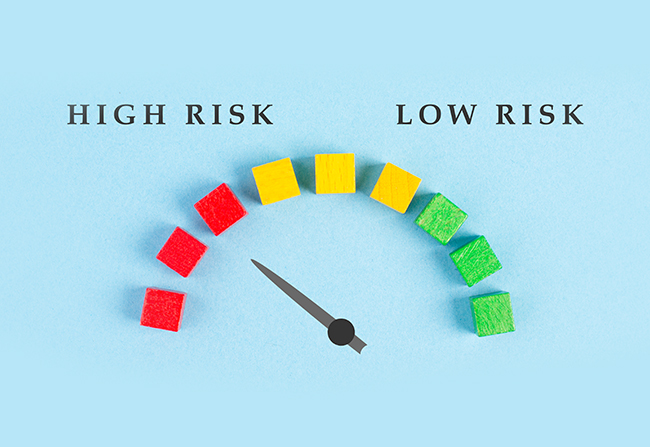
The risk-reward ratio is one of the most essential tools for any trader, providing a way to assess whether a trade is worth taking based on potential gains relative to potential losses. When used effectively, the risk-reward ratio helps traders make better decisions, preserve their capital, and achieve consistent profitability.
In this article, we’ll discuss what the risk-reward ratio is, why it’s important, and how you can apply it in your trading strategy.
What is the Risk-Reward Ratio?
The risk-reward ratio is a measure that compares the amount of money you stand to lose (risk) to the amount you could potentially gain (reward) from a trade. It’s typically expressed as a ratio, such as 1:2 or 1:3, where the first number represents your potential loss and the second represents your potential gain.
For example, if you risk $50 to potentially make $100, your risk-reward ratio is 1:2. This means that for every dollar you risk, you aim to make two dollars in return. The higher the reward relative to the risk, the more attractive the trade becomes.
The risk-reward ratio is not about guaranteeing profits but about ensuring that over a series of trades, you have a better chance of coming out ahead. Even if you win fewer trades than you lose, favorable risk-reward ratios can help you remain profitable in the long run.
Why the Risk-Reward Ratio Matters?
Understanding and using the risk-reward ratio is critical for the following reasons:
It Guides Trade Selection:
The ratio helps you determine whether a trade is worth taking. A poor risk-reward ratio, such as 1:1 or lower, might indicate that the potential reward isn’t worth the risk. This prevents you from entering trades that could harm your account balance.
It Supports Long-Term Profitability:
A strong risk-reward ratio allows you to make money even if your win rate is relatively low. For instance, if you consistently use a 1:3 ratio, you could still be profitable by winning just one out of three trades.
It Reinforces Discipline:
By evaluating trades based on their risk-reward potential, you’ll naturally become more selective and focused on high-quality setups. This helps reduce impulsive trading driven by emotion or overconfidence.
How to Apply the Risk-Reward Ratio in Trading?
Using the risk-reward ratio effectively requires a clear understanding of your trading plan and objectives. Here’s how you can incorporate it into your strategy:
- Define Risk and Reward Levels Before Entering a Trade:
Before placing a trade, decide where you will set your stop-loss (the point at which you will exit to limit losses) and your take-profit level (the target price to lock in gains). By determining these levels in advance, you’ll know your potential risk and reward for the trade. - Set Minimum Risk-Reward Requirements:
Many successful traders aim for a minimum risk-reward ratio, such as 1:2 or 1:3. This ensures that the potential reward justifies the risk taken. If a trade doesn’t meet your minimum ratio, it’s best to pass on it. - Evaluate Market Conditions:
The feasibility of achieving a specific risk-reward ratio depends on market conditions. For example, in volatile markets, you may need to adjust your take-profit and stop-loss levels to account for larger price swings. - Combine with Other Factors:
While the risk-reward ratio is an essential tool, it should not be used in isolation. Combine it with technical analysis, trend evaluation, and other criteria to ensure the trade aligns with your overall strategy.
Common Mistakes to Avoid:
Even with a clear understanding of the risk-reward ratio, traders can still fall into common traps. Here are a few to watch out for:
- Ignoring the Ratio in Favor of Emotions:
Emotional decision-making can lead to abandoning the ratio. For example, fear may cause you to exit a trade prematurely, reducing your reward, or greed might push you to increase your risk unnecessarily. - Setting Unrealistic Targets:
Overly ambitious reward targets can be just as problematic as taking on excessive risk. It’s important to set achievable goals based on market conditions and historical price behavior. - Not Sticking to Your Plan:
Once you’ve established your stop-loss and take-profit levels, resist the urge to move them during the trade. Adjusting these levels based on market fluctuations often leads to higher losses or diminished profits.
Tips for Success with the Risk-Reward Ratio!
To make the most of the risk-reward ratio, keep these tips in mind:
- Be Consistent:
Always evaluate your trades using the same criteria. This helps you build a habit of selecting setups with favorable ratios. - Don’t Force Trades:
If a trade doesn’t meet your risk-reward criteria, don’t take it. There will always be other opportunities. - Review Your Trades:
Periodically review your trade history to analyze whether you’re consistently applying the ratio and achieving the desired outcomes. - Adapt as Needed:
Market conditions can change, and so can your strategy. Be flexible and adjust your approach if needed, but maintain a strong focus on risk-reward principles.
Conclusion:
The risk-reward ratio is a cornerstone of effective trading. It helps you evaluate the quality of trade setups, manage your risk, and maintain profitability over the long term. By consistently choosing trades with favorable ratios, you’ll not only improve your decision-making but also build the discipline and patience needed for sustained success.
Remember, trading is a numbers game. You don’t need to win every trade to be profitable—you just need to ensure that your winners outweigh your losers in the long run. Mastering the risk-reward ratio is an essential step toward achieving that goal.




